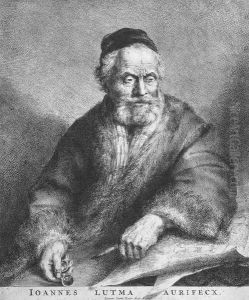Johannes the Younger Lutma Paintings
Johannes Lutma the Younger was a Dutch Golden Age silversmith and sculptor born in 1624 in Amsterdam, Netherlands. He was the son of the renowned silversmith Johannes Lutma the Elder, who was originally from Emden. The elder Lutma had established himself as one of the preeminent silversmiths in Amsterdam and was known for his exquisite Baroque style works, which combined both Dutch and foreign influences.
Following in his father's footsteps, Johannes the Younger trained under his father's tutelage and developed his skills in the family workshop. He likely absorbed the elder Lutma's style and high standards of craftsmanship, which were characterized by elaborate detailing and a sense of movement within the metalwork. Despite the overshadowing fame of his father, Johannes the Younger managed to make a name for himself in the world of Dutch silversmithing.
Johannes the Younger's career spanned a period that witnessed the height of the Dutch Golden Age, where art, science, trade, and the Dutch navy were among the most acclaimed in the world. The wealth that flowed into the Netherlands during this time allowed for a prosperous environment for artists and artisans. Johannes the Younger's contribution to this era mainly centered around his work in silver, which was highly valued for both domestic and religious purposes.
Unfortunately, much of Johannes the Younger's personal life and professional achievements have been overshadowed by the legacy of his father. Specific works attributed to him are less well-documented, and as such, his individual style and contributions to the art of silversmithing are not as clearly defined as those of his father. However, it is believed that he continued the family tradition of producing high-quality silver works, and his career likely included commissions from wealthy patrons and possibly even the Dutch court.
Johannes Lutma the Younger died in 1689, leaving behind a legacy intricately connected with that of his father's. Although his own artistic identity may not be as distinct or recognized as Johannes the Elder's, he remains a figure within the rich tapestry of Dutch Golden Age artisans. His work, no doubt, contributed to the maintenance of the high standards and the innovative designs that were characteristic of Amsterdam's silversmithing during this period.
